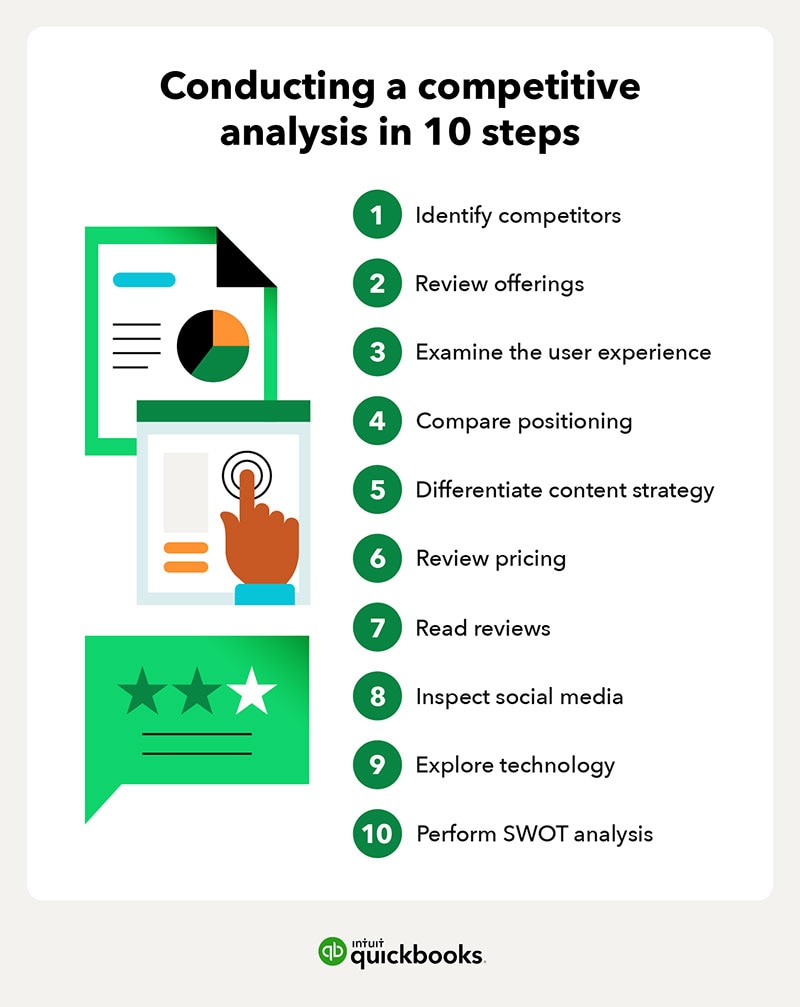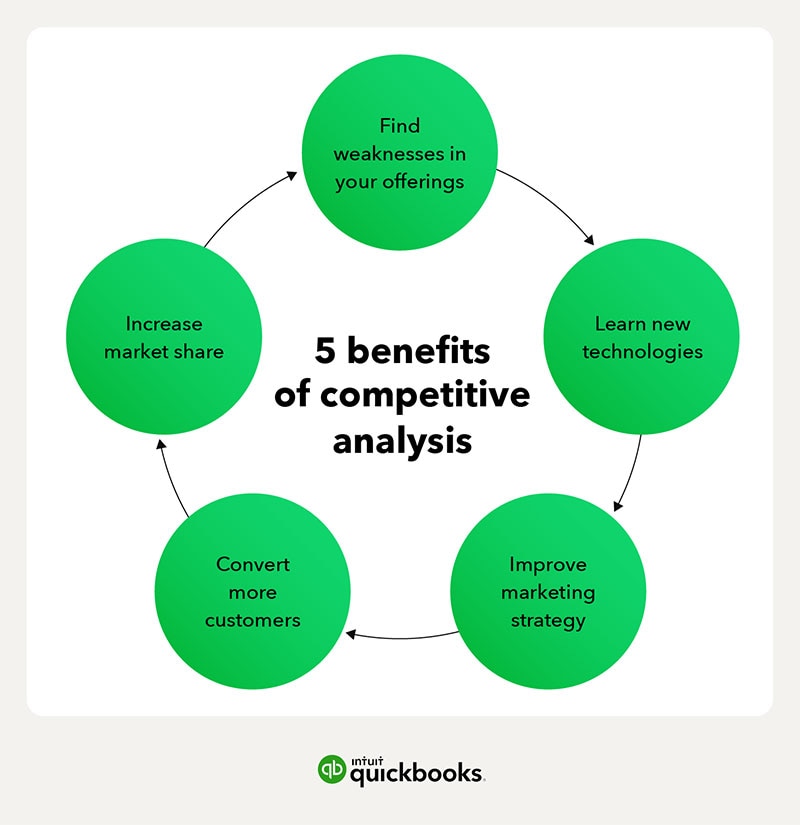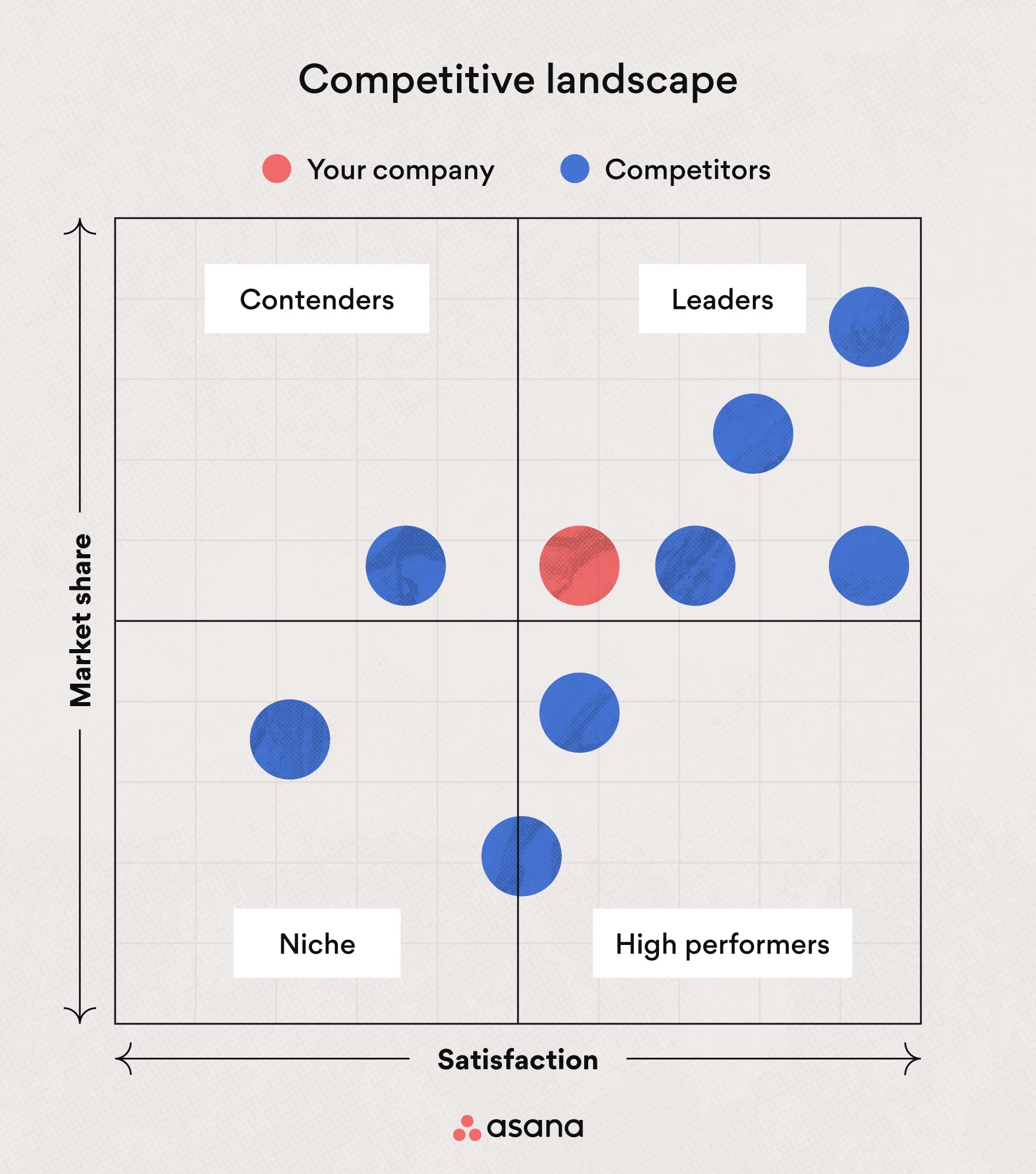Why Analyzing Your Competition is Crucial for Startup Growth
Conducting a thorough startup competitive analysis is essential for any new business looking to succeed in today’s fast-paced market. By understanding the competitive landscape, startups can identify gaps in the market, inform their business strategy, and make data-driven decisions to drive growth. A well-executed competitor analysis can help startups stay ahead of the curve, anticipate market trends, and capitalize on opportunities before their competitors do.
One of the primary benefits of competitor analysis is that it allows startups to understand their target audience better. By analyzing competitors’ customer engagement strategies, startups can gain valuable insights into what works and what doesn’t, and adjust their own approach accordingly. This can include everything from social media marketing to customer service tactics.
Another key advantage of competitor analysis is that it enables startups to identify areas for differentiation. By analyzing competitors’ strengths and weaknesses, startups can pinpoint areas where they can improve or innovate, and develop a unique value proposition that sets them apart from the competition. This can be particularly important for startups operating in crowded markets, where differentiation is key to standing out.
Furthermore, competitor analysis can inform a startup’s product development strategy. By analyzing competitors’ product offerings, startups can identify gaps in the market and develop products or services that meet the needs of their target audience. This can include everything from new features and functionalities to entirely new product lines.
Finally, competitor analysis can help startups stay up-to-date with the latest market trends and developments. By monitoring competitors’ activity, startups can anticipate changes in the market and adjust their strategy accordingly. This can include everything from responding to new technologies and innovations to adapting to changes in consumer behavior.
In order to conduct a comprehensive startup competitive analysis, it’s essential to gather data from a variety of sources. This can include everything from social media and customer reviews to market research reports and industry publications. By analyzing this data, startups can gain a deeper understanding of their competitors and the market as a whole, and make informed decisions to drive growth and success.
How to Conduct a Comprehensive Competitor Analysis for Your Startup
Conducting a comprehensive competitor analysis is a crucial step in developing a successful startup competitive analysis strategy. It involves gathering and analyzing data about your competitors to identify market trends, gaps, and opportunities. Here’s a step-by-step guide on how to conduct a competitor analysis for your startup:
Step 1: Identify Your Competitors
Start by identifying your direct and indirect competitors. Direct competitors offer similar products or services, while indirect competitors offer alternative solutions. Research your competitors’ websites, social media, and customer reviews to understand their strengths and weaknesses.
Step 2: Gather Data
Gather data about your competitors’ products, services, pricing, marketing strategies, and customer engagement tactics. Use tools like Ahrefs, SEMrush, or Moz to analyze their website traffic, keyword rankings, and content marketing strategies. You can also use social media listening tools like Hootsuite or Sprout Social to monitor their social media activity.
Step 3: Analyze Market Trends
Analyze market trends to identify gaps and opportunities. Use tools like Google Trends or Keyword Planner to identify popular keywords and topics. Analyze your competitors’ content marketing strategies to identify gaps in the market and opportunities to create unique content.
Step 4: Analyze Competitors’ Strengths and Weaknesses
Analyze your competitors’ strengths and weaknesses to identify areas for improvement. Evaluate their products, services, pricing, marketing strategies, and customer engagement tactics. Identify areas where you can improve or differentiate your startup.
Step 5: Identify Market Gaps and Opportunities
Identify market gaps and opportunities by analyzing your competitors’ weaknesses and market trends. Look for areas where you can create unique products or services that meet the needs of your target market.
Step 6: Use Competitor Analysis to Inform Your Business Strategy
Use your competitor analysis to inform your business strategy. Adjust your product offerings, marketing strategies, and customer engagement tactics based on your analysis. Continuously monitor your competitors and adjust your strategy as needed.
By following these steps, you can conduct a comprehensive competitor analysis that informs your startup competitive analysis strategy and drives business growth. Remember to stay up-to-date with market trends and continuously monitor your competitors to maintain a competitive edge.
Understanding Your Competitors’ Strengths and Weaknesses
Understanding your competitors’ strengths and weaknesses is a crucial aspect of startup competitive analysis. By analyzing your competitors’ products, services, marketing strategies, and customer engagement, you can identify areas for improvement and opportunities to differentiate your startup.
Competitors’ Strengths
Analyze your competitors’ strengths to identify areas where they excel. This can include their products, services, pricing, marketing strategies, and customer engagement tactics. Look for areas where they have a competitive advantage, such as a strong brand reputation, innovative products, or effective marketing campaigns.
Competitors’ Weaknesses
Analyze your competitors’ weaknesses to identify areas where they struggle. This can include gaps in their product or service offerings, ineffective marketing strategies, or poor customer engagement. Look for areas where they are vulnerable to competition, such as a lack of innovation, high prices, or poor customer service.
Product and Service Analysis
Analyze your competitors’ products and services to identify areas for improvement. Look at their features, pricing, and quality to determine how they compare to your own products and services. Identify areas where you can improve or differentiate your products and services to gain a competitive advantage.
Marketing Strategy Analysis
Analyze your competitors’ marketing strategies to identify areas for improvement. Look at their advertising, social media, content marketing, and public relations efforts to determine how they reach and engage with their target audience. Identify areas where you can improve or differentiate your marketing strategy to gain a competitive advantage.
Customer Engagement Analysis
Analyze your competitors’ customer engagement tactics to identify areas for improvement. Look at their customer service, support, and feedback mechanisms to determine how they interact with their customers. Identify areas where you can improve or differentiate your customer engagement tactics to gain a competitive advantage.
By analyzing your competitors’ strengths and weaknesses, you can gain valuable insights into the market and identify opportunities to differentiate your startup. Use this information to inform your business strategy and make data-driven decisions to drive growth and success.
Identifying Market Gaps and Opportunities for Your Startup
Identifying market gaps and opportunities is a critical aspect of startup competitive analysis. By analyzing market trends, customer needs, and competitor weaknesses, you can identify areas where your startup can differentiate itself and gain a competitive advantage.
Analyzing Market Trends
Analyze market trends to identify areas where your startup can capitalize on emerging opportunities. Look at industry reports, market research studies, and social media conversations to identify trends and patterns. Identify areas where your startup can innovate and differentiate itself from competitors.
Understanding Customer Needs
Understand your target customers’ needs and pain points to identify areas where your startup can provide value. Conduct customer surveys, gather feedback, and analyze customer reviews to identify areas where your startup can improve or differentiate its products or services.
Identifying Competitor Weaknesses
Identify your competitors’ weaknesses to identify areas where your startup can gain a competitive advantage. Analyze their products, services, marketing strategies, and customer engagement tactics to identify areas where they are vulnerable to competition.
Market Gap Analysis
Conduct a market gap analysis to identify areas where your startup can fill a gap in the market. Look at areas where your competitors are not meeting customer needs or where there is a lack of innovation. Identify areas where your startup can provide a unique solution or product that meets customer needs.
Opportunity Analysis
Conduct an opportunity analysis to identify areas where your startup can capitalize on emerging opportunities. Look at areas where there is a growing demand for a product or service or where there is a lack of competition. Identify areas where your startup can innovate and differentiate itself from competitors.
By identifying market gaps and opportunities, you can inform your business strategy and make data-driven decisions to drive growth and success. Use this information to adjust your product offerings, marketing strategies, and customer engagement tactics to gain a competitive advantage in the market.
Some common market gaps and opportunities that startups can capitalize on include:
- Unmet customer needs
- Emerging trends and technologies
- Competitor weaknesses
- Growing demand for a product or service
- Lack of innovation in a particular industry or market
By identifying these market gaps and opportunities, you can position your startup for success and gain a competitive advantage in the market.
Using Competitor Analysis to Inform Your Business Strategy
Competitor analysis is a crucial tool for startups to inform their business strategy and gain a competitive advantage in the market. By analyzing your competitors’ strengths, weaknesses, and market trends, you can identify areas for improvement and opportunities to differentiate your startup.
Adjusting Product Offerings
Use competitor analysis to adjust your product offerings and stay competitive in the market. Analyze your competitors’ products and services to identify areas where you can improve or differentiate your offerings. Identify gaps in the market and opportunities to innovate and create new products or services that meet customer needs.
Refining Marketing Strategies
Use competitor analysis to refine your marketing strategies and stay ahead of the competition. Analyze your competitors’ marketing tactics, including their advertising, social media, and content marketing strategies. Identify areas where you can improve or differentiate your marketing approach to reach and engage with your target audience.
Enhancing Customer Engagement
Use competitor analysis to enhance your customer engagement tactics and build strong relationships with your customers. Analyze your competitors’ customer engagement strategies, including their customer service, support, and feedback mechanisms. Identify areas where you can improve or differentiate your customer engagement approach to meet customer needs and build loyalty.
Informing Business Decisions
Use competitor analysis to inform your business decisions and drive growth and success. Analyze your competitors’ strengths and weaknesses, market trends, and customer needs to identify opportunities and challenges. Use this information to make data-driven decisions and adjust your business strategy to stay competitive in the market.
Best Practices for Using Competitor Analysis to Inform Business Strategy
Here are some best practices for using competitor analysis to inform your business strategy:
- Conduct regular competitor analysis to stay up-to-date with market trends and competitor activity
- Use competitor analysis to identify areas for improvement and opportunities to differentiate your startup
- Adjust your product offerings, marketing strategies, and customer engagement tactics based on competitor analysis
- Use competitor analysis to inform business decisions and drive growth and success
- Stay customer-centric and focused on meeting customer needs
By using competitor analysis to inform your business strategy, you can gain a competitive advantage in the market and drive growth and success for your startup.
Tools and Techniques for Competitor Analysis
Conducting a competitor analysis requires the use of various tools and techniques to gather and analyze data. Here are some of the most effective tools and techniques for startup competitive analysis:
Social Media Listening
Social media listening involves monitoring social media conversations about your competitors, industry, and target audience. This can help you identify trends, sentiment, and customer needs. Use social media listening tools like Hootsuite, Sprout Social, or Brand24 to track social media conversations and gather insights.
Customer Surveys
Customer surveys involve gathering feedback from your target audience to understand their needs, preferences, and pain points. Use survey tools like SurveyMonkey, Google Forms, or Typeform to create and distribute surveys. Analyze the results to identify areas for improvement and opportunities to differentiate your startup.
Market Research Reports
Market research reports provide in-depth analysis of your industry, competitors, and target audience. Use market research reports from firms like IBISWorld, Statista, or Euromonitor to gather insights and data. Analyze the reports to identify trends, opportunities, and challenges.
Competitor Profiling
Competitor profiling involves creating detailed profiles of your competitors, including their products, services, marketing strategies, and customer engagement tactics. Use competitor profiling tools like Ahrefs, SEMrush, or Moz to gather data and create profiles. Analyze the profiles to identify areas for improvement and opportunities to differentiate your startup.
SWOT Analysis
SWOT analysis involves identifying the strengths, weaknesses, opportunities, and threats of your competitors. Use SWOT analysis templates or tools like MindMeister or Lucidchart to create and analyze SWOT matrices. Identify areas for improvement and opportunities to differentiate your startup.
Best Practices for Using Tools and Techniques for Competitor Analysis
Here are some best practices for using tools and techniques for competitor analysis:
- Use a combination of tools and techniques to gather and analyze data
- Stay up-to-date with market trends and competitor activity
- Use competitor analysis to inform business decisions and drive growth and success
- Stay customer-centric and focused on meeting customer needs
- Continuously monitor and adjust your competitor analysis strategy as needed
By using these tools and techniques, you can conduct a comprehensive competitor analysis and gain valuable insights to inform your business strategy and drive growth and success for your startup.
Real-World Examples of Successful Competitor Analysis
Several startups have successfully used competitor analysis to inform their business strategy and drive growth and success. Here are a few examples:
Airbnb: Competitor Analysis in the Sharing Economy
Airbnb, a popular online marketplace for short-term vacation rentals, used competitor analysis to identify gaps in the market and opportunities to differentiate its platform. By analyzing its competitors, including traditional hotel chains and other sharing economy platforms, Airbnb was able to identify areas for improvement and innovation. For example, Airbnb introduced a verified ID system to increase trust and safety on its platform, which helped to differentiate it from competitors.
Uber: Competitor Analysis in the Ride-Sharing Market
Uber, a popular ride-sharing platform, used competitor analysis to identify opportunities to expand its services and improve its customer experience. By analyzing its competitors, including traditional taxi companies and other ride-sharing platforms, Uber was able to identify areas for improvement and innovation. For example, Uber introduced a range of new services, including UberPool and UberEats, which helped to differentiate it from competitors and expand its customer base.
Warby Parker: Competitor Analysis in the Eyewear Market
Warby Parker, a popular online eyewear retailer, used competitor analysis to identify gaps in the market and opportunities to differentiate its brand. By analyzing its competitors, including traditional eyewear retailers and other online eyewear retailers, Warby Parker was able to identify areas for improvement and innovation. For example, Warby Parker introduced a home try-on program, which allowed customers to try on glasses at home before purchasing, which helped to differentiate it from competitors and improve its customer experience.
Best Practices for Conducting Competitor Analysis
These examples demonstrate the importance of competitor analysis in informing business strategy and driving growth and success. Here are some best practices for conducting competitor analysis:
- Identify your competitors and analyze their strengths and weaknesses
- Analyze market trends and customer needs to identify gaps and opportunities
- Use competitor analysis to inform business decisions and drive growth and success
- Stay up-to-date with market trends and competitor activity
- Continuously monitor and adjust your competitor analysis strategy as needed
By following these best practices and using competitor analysis to inform their business strategy, startups can drive growth and success in their respective markets.
Common Mistakes to Avoid in Competitor Analysis
Conducting a competitor analysis can be a valuable tool for startups to inform their business strategy and drive growth and success. However, there are several common mistakes to avoid when conducting a competitor analysis:
Confirmation Bias
One of the most common mistakes to avoid in competitor analysis is confirmation bias. This occurs when you only look for information that confirms your existing assumptions or biases about your competitors. To avoid confirmation bias, it’s essential to gather data from multiple sources and consider different perspectives.
Outdated Information
Another mistake to avoid is using outdated information. Competitor analysis should be an ongoing process, and it’s essential to stay up-to-date with market trends and competitor activity. Use the latest data and research to inform your competitor analysis and avoid relying on outdated information.
Failure to Consider Customer Needs
A common mistake in competitor analysis is failing to consider customer needs. Competitor analysis should not only focus on your competitors but also on your target audience. Analyze customer needs and preferences to identify gaps in the market and opportunities to differentiate your startup.
Overemphasis on Competitors’ Strengths
Another mistake to avoid is overemphasizing your competitors’ strengths. While it’s essential to understand your competitors’ strengths, it’s equally important to identify their weaknesses and vulnerabilities. Analyze your competitors’ weaknesses to identify opportunities to differentiate your startup and gain a competitive advantage.
Best Practices for Avoiding Common Mistakes
Here are some best practices for avoiding common mistakes in competitor analysis:
- Gather data from multiple sources to avoid confirmation bias
- Stay up-to-date with market trends and competitor activity
- Consider customer needs and preferences
- Analyze competitors’ weaknesses and vulnerabilities
- Continuously monitor and adjust your competitor analysis strategy as needed
By avoiding these common mistakes and following best practices, startups can conduct a comprehensive competitor analysis that informs their business strategy and drives growth and success.






